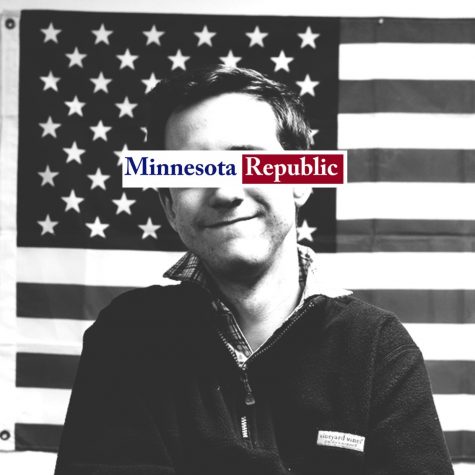Community Gathers to Learn About Sanctuary Movement
December 15, 2016
What are the rights of undocumented people on campus? What is a sanctuary campus? What is a sanctuary city? These are a few of the questions prompted about 100 students and parents from different cultures, religions, and nationalities to attend “Immigration Law Teach-In: Sanctuary and the Rights of Immigrants” in Coffman Memorial Union’s Mississippi Room late yesterday afternoon. Following the tense political election that took place last month, the event encouragedattendees from various different perspectives and ideologies to gather together and learn about the immigration system from a non-partisan perspective.
Despitethe bitter cold weather outside, the Mississippi Room began to reach capacity around4:00 p.m., when the event began. Professor Linus Chan from the Center for New Americans and the University of Minnesota Law School led the presentation alongside Professor Virgil Wiebe from the University of St. Thomas School of Law; both are experts on American Immigration Law.
The sheer number of immigration categoriesand the different requirements for each can seem overwhelming tosomeone who is unfamiliar with the subject. It all depends on whether the person is seeking to immigrate due to employment, safety, or other purposes. The U.S. is currently home to a large numberof immigrants: about 13 percent of the population. According to the Migration Policy, around 42 million U.S. inhabitants were immigrants in 2014.
Many people present at the event wondered what constituteda “sanctuary” city or campus.Chan did a greatjob explaining what it means to be a sanctuary city, like Minneapolis and St. Paul. A sanctuarycity has adopted a policy in order to protect its undocumented inhabitants from deportation. These cities refuse to prosecute undocumentedinhabitants or voluntarily cooperate with immigration agencies to prosecute and deport these inhabitants. The main goal of a “sanctuary” space is to protect families of undocumented immigrants toavoid familial separation. The term itself was first coined in the “Sanctuary Movement,” a movement in the 1990’s, which aimed to protect refugees from Central America during the civil conflict.
As a political science major, sophomore student Nicolas Tobon was one of many students excited for this presentation.
“I sympathize with people that are currently in an immigration situation where they don’t know what can happen the next day, where their residence here is uncertain. Also, it is important that people are aware as to what exactly the definition of sanctuary is and how it can impact their lives,”Tobonsaid.
With the current situation and the large number of undocumented inhabitants in the U.S. today (around 11 million nationwide), some colleges and universitiesthroughout the nation have declared themselves sanctuary schools to protect these inhabitants. Not only have schools reached out to help students who are in this situation, butprogramssuch as the Deferred Action for Childhood Arrivals (DACA) have also been implemented to protect undocumented immigrants that have lived here for the majority of their lives. The debate over whether a city should become “sanctuary” is relevantdue to President-Elect Donald Trump’s threat to cut federal funding for these cities.
This presentation was Co-Sponsored by the Center for New Americans, Immigration History Research Center, Race, Indigeneity, Gender, and Sexuality Initiative, and Human Rights Program.













